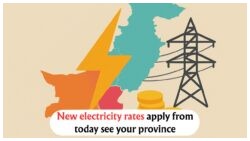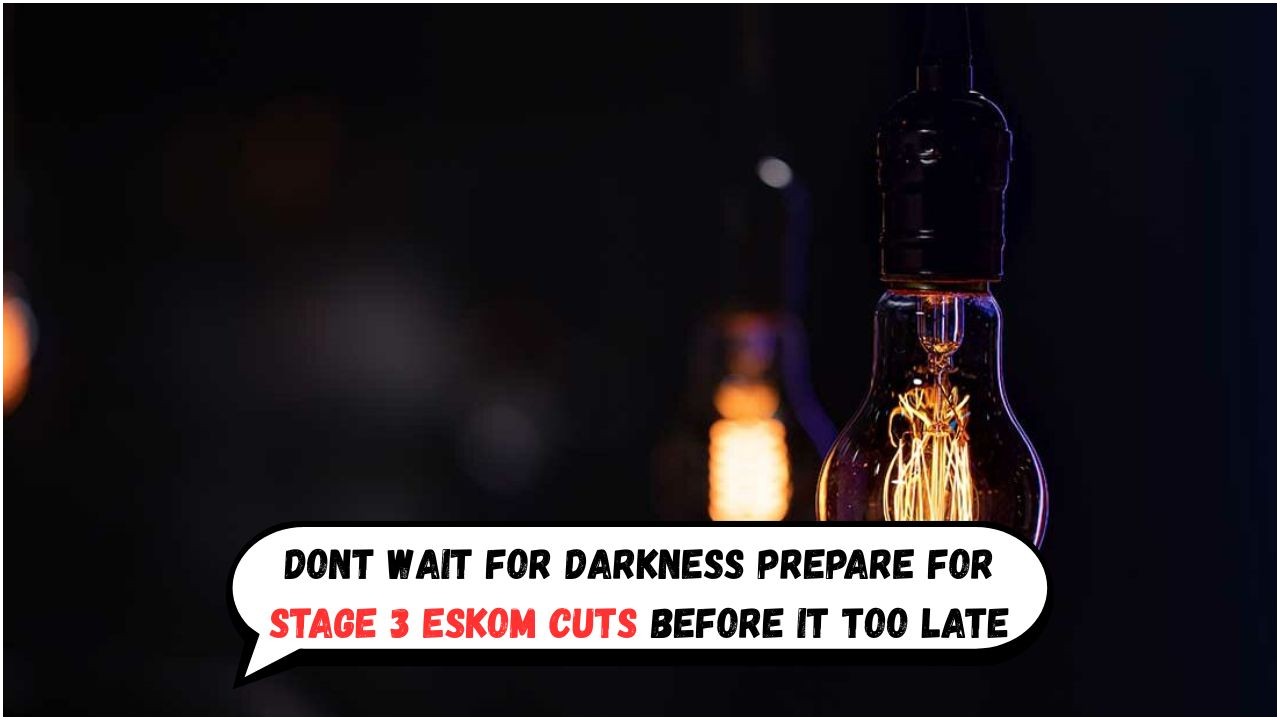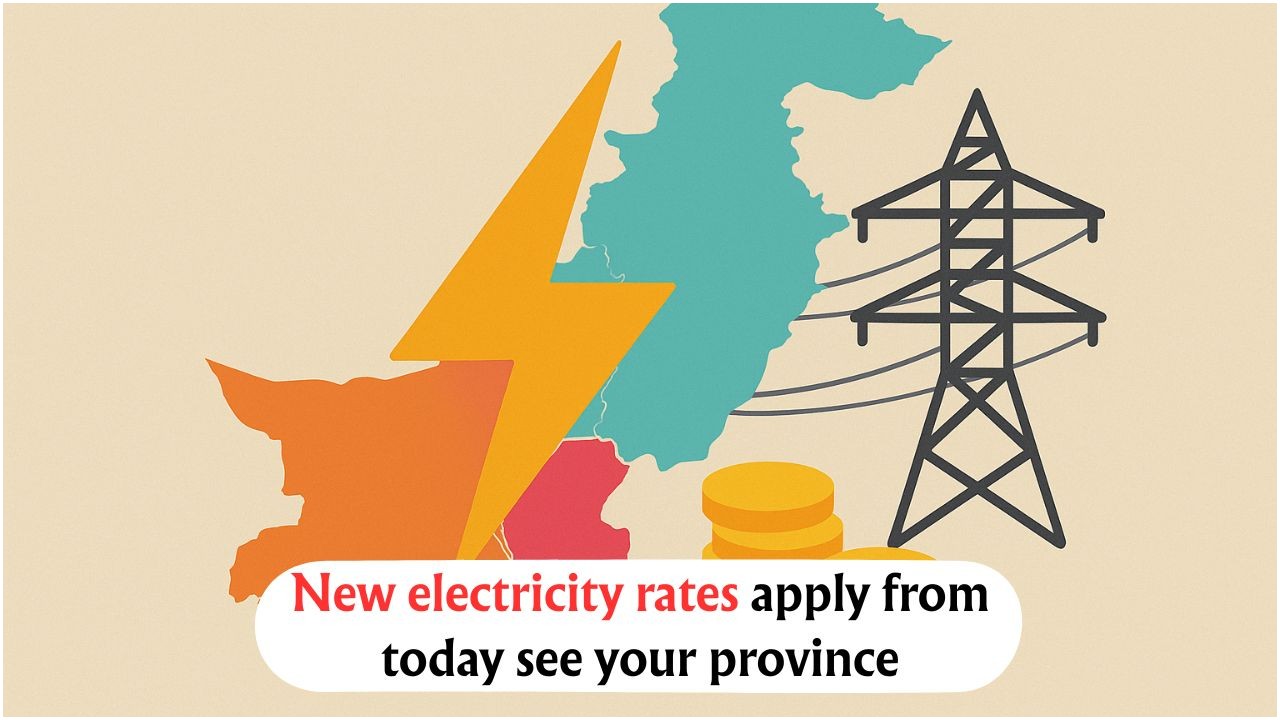Eskom warns of potential Stage 3 loadshedding: Eskom, South Africa’s primary electricity supplier, has issued a forewarning about the possibility of Stage 3 loadshedding on September 25. This announcement comes as a precautionary measure, highlighting potential power outages if 15 gigawatts of capacity fail. As the nation braces for these possible disruptions, citizens are urged to prepare adequately. With the ever-present challenge of balancing supply and demand, Eskom continues its efforts to stabilize the grid while urging consumers to conserve energy. The situation remains fluid, and Eskom’s communication serves as a critical reminder of the delicate state of the nation’s power infrastructure.
Understanding Stage 3 Loadshedding in South Africa
Stage 3 loadshedding in South Africa involves rotational power cuts to maintain the integrity of the national power grid. When the electricity demand exceeds the available supply by a significant margin, Eskom implements various stages of loadshedding, with Stage 3 being one of the more severe measures. This stage typically means that consumers can expect to be without power for up to four hours at a time, potentially twice a day. In such scenarios, businesses and households are affected, leading to disruptions in daily activities. Understanding the reasons behind these power cuts is essential for planning and mitigating their impact. The primary factors contributing to loadshedding include inadequate maintenance of power plants, unforeseen technical failures, and an insufficient reserve margin. Eskom’s efforts to communicate these challenges highlight the importance of collective responsibility in managing electricity consumption.
- Four-hour power cuts possible
- Impacts both residential and commercial sectors
- Caused by supply-demand imbalances
- Requires public cooperation to manage
How to Prepare for Potential Power Outages
Preparation is key to minimizing the adverse effects of potential Stage 3 loadshedding. South Africans are encouraged to adopt proactive measures to ensure minimal disruption to their daily routines. Here are some steps to consider:
 Rand Plummets to R18.23: Brace for Impact on Salaries, Transport, and Essentials This August
Rand Plummets to R18.23: Brace for Impact on Salaries, Transport, and Essentials This August
- Keep electronic devices charged and consider investing in power banks.
- Stock up on non-perishable food items that do not require refrigeration.
- Install surge protectors to safeguard appliances from power surges.
- Ensure alternative lighting options, such as candles or solar lamps, are readily available.
Eskom’s Strategies to Mitigate Loadshedding Risks
Eskom is actively employing various strategies to mitigate the risks of loadshedding and ensure a stable power supply for the nation. These strategies focus on improving operational efficiency and enhancing grid reliability. One of the primary approaches is the maintenance and upgrade of existing power plants to reduce the likelihood of unexpected breakdowns. Additionally, Eskom is investing in renewable energy sources, such as wind and solar, to diversify the energy mix and reduce dependency on coal-fired power stations. Engaging in demand-side management programs is another crucial aspect, encouraging consumers to reduce their energy usage during peak demand periods. These efforts, combined with transparent communication, aim to stabilize the power situation in South Africa.
 Eskom Announces August 1 Rate Increase – Discover Your Province's New Electricity Tariffs!
Eskom Announces August 1 Rate Increase – Discover Your Province's New Electricity Tariffs!
- Plant maintenance and upgrades
- Investment in renewable energy
- Demand-side management programs
- Transparent communication with the public
- Enhancing grid reliability
- Encouraging energy conservation
- Exploring alternative energy solutions
- Fostering public-private partnerships
The Role of Renewable Energy in South Africa’s Power Sector
| Renewable Source | Capacity (MW) | Contribution (%) |
|---|---|---|
| Wind | 3,500 | 8% |
| Solar | 2,400 | 5% |
| Hydro | 2,000 | 4% |
| Biomass | 600 | 1% |
| Other | 500 | 1% |
Impact of Loadshedding on Businesses
Loadshedding has a profound impact on businesses across South Africa, affecting productivity and profitability. Frequent power cuts disrupt manufacturing processes, hinder service delivery, and increase operational costs. Businesses are compelled to invest in backup power solutions, such as generators or uninterruptible power supplies (UPS), to maintain continuity. Additionally, the unpredictability of loadshedding schedules makes it challenging for businesses to plan effectively, leading to delays and potential loss of revenue. Furthermore, small businesses, which may not have the resources to invest in alternative power solutions, are particularly vulnerable. The economic implications of loadshedding underline the need for a reliable and sustainable energy solution.
- Disrupts manufacturing and service delivery
- Increases operational costs
- Requires investment in backup power solutions
- Challenges small businesses disproportionately
- Leads to potential revenue loss
Consumer Tips for Coping with Loadshedding
| Tip | Description |
|---|---|
| Plan Ahead | Check loadshedding schedules and plan activities accordingly. |
| Use Energy Wisely | Switch off non-essential appliances during peak times. |
| Stay Informed | Keep updated with Eskom’s announcements and news. |
| Invest in Alternatives | Consider solar panels or generators as backup options. |
| Community Support | Engage in community initiatives to support each other. |
FAQ Section
What is Stage 3 loadshedding?
Stage 3 loadshedding involves rotational power cuts that can last up to four hours to balance electricity demand and supply.
 Eskom Announces August 1 Tariff Increase – Discover Your Province's Updated Electricity Rates Today
Eskom Announces August 1 Tariff Increase – Discover Your Province's Updated Electricity Rates Today
How can I prepare for potential power cuts?
Keep devices charged, stock up on essentials, and have alternative lighting available.
What strategies is Eskom implementing to reduce loadshedding?
Eskom is focusing on plant maintenance, investing in renewables, and demand-side management.
How does loadshedding affect businesses?
It disrupts operations, increases costs, and can lead to revenue loss due to power interruptions.
 SASSA Grant Holders Set for July-August Boost: Early Deposits and Bonus Payments Announced
SASSA Grant Holders Set for July-August Boost: Early Deposits and Bonus Payments Announced
Are there alternatives to cope with loadshedding?
Investing in generators, solar panels, and using energy wisely are effective alternatives.







